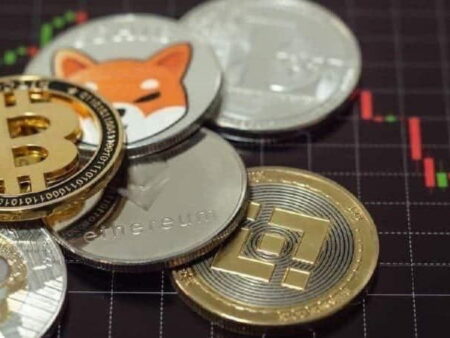In June, the US witnessed a notable shift in its economic landscape as the consumer price index (CPI) data unveiled a year-on-year inflation rate of 3%. This marked a significant decline from the prior year’s four-decade peak of 9.1%.
However, on August 10, a new CPI print is set to be published and show inflation rates for July. According to market estimates, industry insiders are bracing for an unsettling revelation – July’s annual inflation rate is projected to surge, stirring concerns among crypto investors.
Why are crypto prices at risk of declining today?
Since peaking at more than 9% last year, annual inflation in the US has been continuously declining after the Fed embarked on an aggressive rate-hiking campaign to bring the skyrocketing prices down.
In July, the CPI report by the Bureau of Labor Statistics showed that inflation dropped further to 3% in June. Fed went on to deliver another 25 basis points (bps) rate increase late last month, with many hoping that it could be the last hike for the time being, sparking optimism in the US financial markets, including cryptocurrency.
But now, the latest market expectations point to a possible uptick in the annual inflation rate from 3% in June to 3.3% in July, indicating that the Fed’s battle with rising costs is not entirely over yet.
Should these forecasts materialize, the likelihood of an additional rate hike would rise substantially, consequently initiating a renewed phase of uncertainty that could impact both cryptocurrencies and the stock market.
Crypto prices ahead of CPI report
At the time of writing, most of the major cryptocurrencies are in the red over the past 24 hours. Bitcoin (BTC), the maiden crypto asset, fell more than 1% on the day, Ethereum (ETH) lost around 0.6%, while Binance Coin (BNB) slipped 1.3%.
XRP (XRP) is leading the losses, declining 2.3% on the 24-hour chart. Meanwhile, Dogecoin (DOGE), Cardano (ADA), and Solana (SOL) are down 0.14%, 0.35%, and 1.08%, respectively.
While the existing declines appear modest, there remains a potential for their scope to expand. The situation hinges on the forthcoming CPI data, which, if revealing an inflation surge of 3.3% or beyond for July, could trigger a defensive reaction from investors and amplify current losses.






